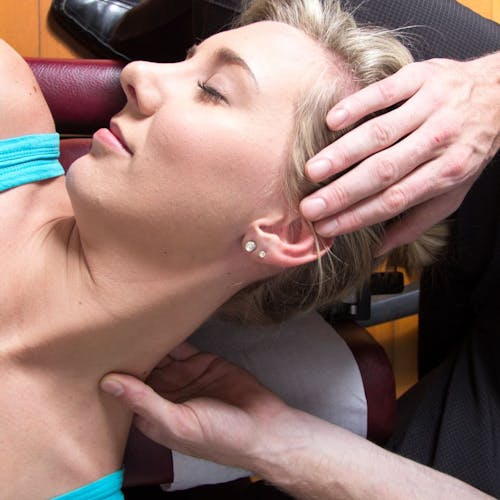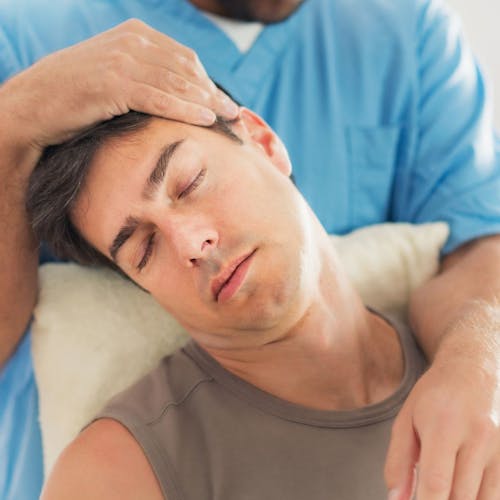-
A Reputation for Quality
Our therapists at Whitestone Physical Therapy of Queens are highly trained to provide quality care for head and neck pain. A thorough initial evaluation helps us identify movement dysfunction that can be addressed with patient education, manual techniques, therapeutic exercise, and modalities. Regular reassessment provides reassurance that we are always working to achieve patient goals in a cost-effective manner.
Priority One – Pain Relief
Severe head & neck pain can be disabling. For this reason, our first priority is pain relief. Treating the underlying causes of identifiable movement dysfunction is the next step toward achieving long-term relief and recovery.
A Hands-on Approach
Hands-on techniques, in most cases, are an essential part of a successful head and neck pain treatment program. Our therapists are equipped with cutting-edge manual skills to assist with the recovery of range of motion, reestablish correct movement patterns, and alleviate muscle related pain and tightness. Coupled with patient education and therapeutic exercise, the results can be dramatic and long lasting.
Evidence is Our Guide
Medical research is continuously providing the clinicians at Whitestone Physical Therapy of Queens with “current best-evidence” guidance so we are equipped to provide the state-of-the -art care to our community members. We look to systematic reviews and random controlled trials to help guide us in the delivery of state-of-the-art care. Coupled with regular attendance to continuing education courses, Whitestone Physical Therapy of Queens has a reputation for providing a high quality service to those in need of head and neck pain rehabilitation.
-
Temporomandibular disorder (TMD), is a term that describes an entire group of disorders involving the temporomandibular joint or joints (TMJ).
The TMJs are the jaw joints. There is one on each side of your head just in front of your ear canals. Like many other joints in the body, they consist of:
- Muscles that control joint movement,
- Ligaments that hold the bones together,
- Cartilage that provides a smooth surface for the bones to move on,
- A disc that helps with proper movement, of the bones,
- Elastic tissue that helps hold the disc in place.
One or more of the above tissues can cause symptoms. In fact, studies suggest that one third of the population at any one time experiences TMJ symptoms such as pain with chewing, yawning, or jaw opening. Women seem to have TMJ problems much more often than men and it is estimated that 3-6% of the population might benefit from treatment.
There are a variety of temporomandibular disorders. The muscles (myogenous), joint(s) (arthrogenous), or a combination of the two may cause pain.
Since physical therapists treat muscle and joint problems, they are ideally suited to address a TMD. Moreover, a majority of patients diagnosed with TMD, also have associated neck pain. Both respond well to treatment provided by a physical therapist. No other healthcare practitioner is better suited to address both the TMD and neck pain.
TMD may appear to be a complex condition and it shouldn’t be. This website and your physical therapist can help to insure the following:
- You are properly educated,
- that your treatment is conservative, cost-effective, and reversible,
goals are realistic, - your examination is brief and meant to identify your source(s) of pain.
When a physical therapist performs the examination, they will be able to classify you as having one or more of the following:
- An inflammatory condition
- Limited jaw range of motion
- Excessive jaw range of motion
- Arthrogenous Disc Displacement
- Jaw muscle pain
- Neck pain causing related headaches (sometimes mistaken as TMD)
Once the involved structures are identified, the therapist will be able to provide you with the appropriate treatment.
If you would like to learn more about how our TMJ specialists can help you out, please give us a call.


